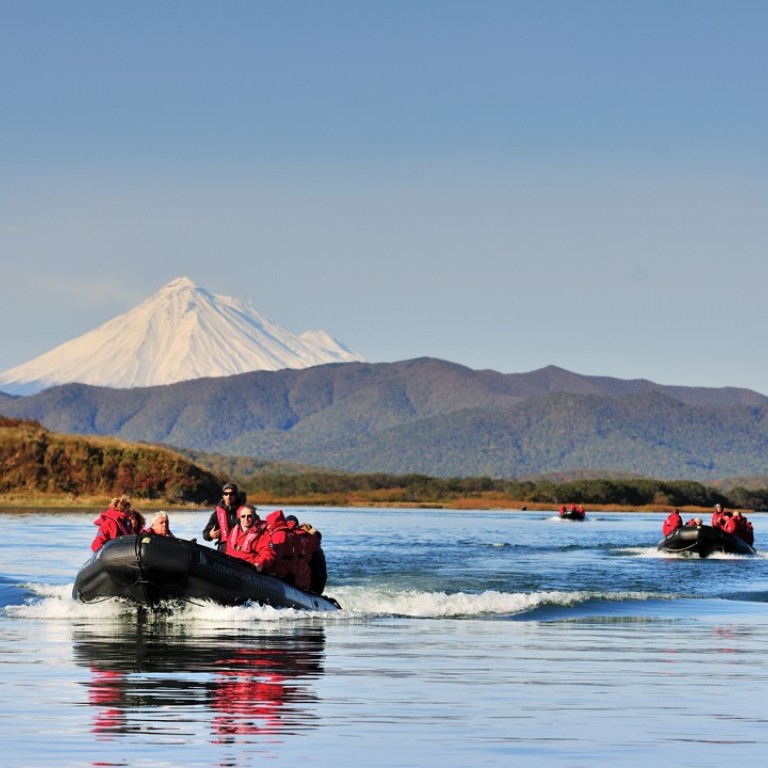Remote Russia’s Northern Lights may be best seen from a luxury cruise

Russia’s Chukotka, Kamchatka, the Kuril and Sakhalin islands offer volcanoes, bears, whales, unique birds and more
Sailing to the most remote corners of Russia is waving goodbye to the modern world and saying hello to active volcanoes, hungry bears and marine wildlife. Flying from Hong Kong to the far end of Russia, to Anadyr in Chukotka, is like travelling to the edge of the world. This part of Russia is remote and only a vicious Bering Strait lies between here and the United States.
It’s here where we embark on a month-long voyage with L’Austral, a new hi-tech expedition ship owned by Ponant, a luxury cruise company from France famous for its worldwide expeditions. The itinerary is exotic: Chukotka, Kamchatka, the Kuril and Sakhalin islands.

Chukotka Autonomous Okrug is the easternmost part of the Russian Federation. Our ship L’Austral anchors somewhere in the bay of Enmelen. As we step onto the pebble-strewn beach, we see a dog nibbling away on a piece of whale blubber. In the air we detect the smell of seaweed, fish and other sea mammals drying in a wooden barrack.
A population of 330, a mix of Chukchiand Yupik, live here in wooden, ramshackle houses, which manage to withstand a harsh climate. They survive mainly thanks to fishing and hunting reindeer. There is no escape possible: no roads leading to the village and when the sea is in revolt, Enmelen is isolated from the rest of the world. It’s no wonder that Enmelen means “capricious” in the local language.
As we continue exploring Chukotka aboard L’Austral, expedition leader Nicolas Dubreuil ventures out every morning with his team to check if a landing is possible and safe. At one point we are joined by Russian officials, including Serguei, the man responsible for the trip’s operations.

“Two years ago I came here ... with Serguei to check out the region,” Dubreuil says. “We travelled along the coast in search of beautiful places, looking for realistic locations to anchor a vessel of 142 metres long and 10,700 tonnes. A lot of planning and paperwork has been done and bureaucratic hassle is part of the deal. This is not a part of the world where a lot of cruise ships sail by so every landing and every exploration is quite special. So far, this is still one of the most remote corners of the world.”
We make our long and leisurely way southwest to Kamchatka, a 1,250 km-long peninsula caught between the Pacific and the Sea of Okhotsk. Few people (barely 322,000 in an area of 270,000 sq km) live here, but there is a plethora of flora and fauna. In addition to the Unesco-protected volcanoes, there are also bears, whales, unique birds and more. It is here that we see the lights in the night sky.
This is not a part of the world where a lot of cruise ships sail by so every landing and every exploration is quite special